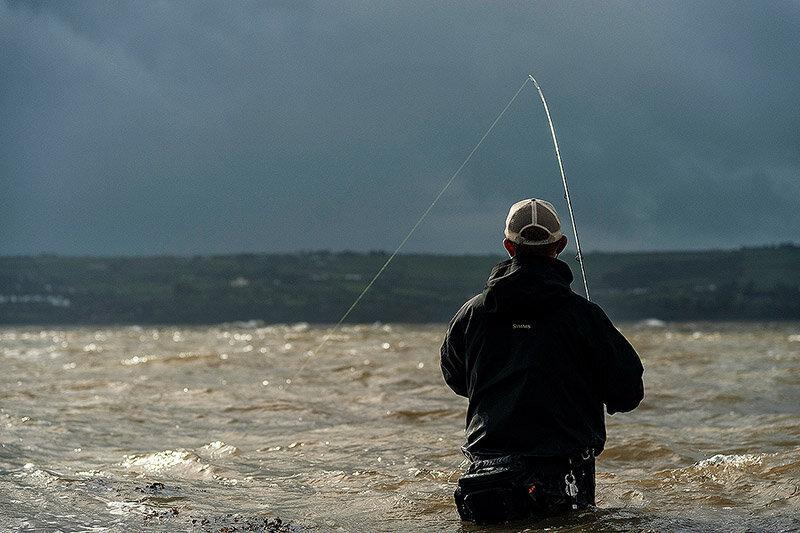A Beginner's Guide to Fishing in Murky Waters

Beginner anglers often want to fish in murky waters. Although the limited visibility might seem daunting, it offers a chance to hone skills that can enhance your fishing success.
Common Mistakes When Fishing in Murky Waters and How to Avoid Them
Choosing the Wrong Baits
Many newcomers persist with their usual baits, like natural-colored lures, which are less noticeable in muddy water.
Solution: In low-visibility settings, select vivid or shiny baits such as chartreuse, orange, or white. Lures with added rattles or spinners can aid fish in detecting movement and vibrations, making them more likely to bite.
Overlooking Scent
Belittling the importance of scent in muddy water is a frequent novice blunder.
Solution: Fish often depend on their sense of smell in cloudy conditions. Incorporate scented soft plastics and pre-scented baits, or add a scent enhancer to your lures. Doing this can meaningfully increase your probability of a catch.
Incorrect Depth Fishing
Beginners often cast aimlessly, either fishing too deep or too shallow.
Solution: In murky water, fish typically gather near structures like submerged logs or drop-offs. Use a depth finder or focus on mid-depth levels if you need more clarification. Test various depths until you find the fish.
Fishing Too Quickly
Many new fishermen need to retrieve their lures faster in murky conditions.
Solution: Slow your pace! Fish need more time to identify and pursue bait in murky waters. A slow and consistent retrieve provides them more opportunity to find and attack.
Disregarding the Environment
Ignoring external elements such as wind direction, water flow, and temperature.
Solution: Be mindful of these aspects. Wind can push food into specific areas, drawing fish. Fish are also more active in certain temperatures, so check weather conditions before setting out.
Suggested Beginner Gear for Fishing in Murky Waters
Starting doesn’t have to be expensive. Here’s a list of affordable, beginner-friendly equipment to enhance your effectiveness in murky waters:
Rod and Reel Combo
A medium-heavy spinning rod and reel combo are adaptable and user-friendly. It offers sufficient strength to catch larger fish while still being responsive to light bites. Look for models priced between $50–$100 for a good balance of quality and cost-effectiveness.
Fishing Line
A braided line (15–30 lb test) is best for murky water. Braided lines provide exceptional sensitivity and strength, making it easier to feel even the smallest bites. Their high visibility also aids in tracking your lure’s position.
Lures
Top Picks for Murky Waters:
Spinnerbaits: Their flashy blades and vibrations are ideal for attracting attention.
Crankbaits: Choose ones with bright hues and a rattling chamber.
Soft Plastics: Scented worms or crawfish are cost-effective and efficient.
Most lures range from $5–$10, so build a small assortment to try out different choices.
Hooks and Weights
Begin with J-hooks and bullet weights. They are flexible for various setups, especially when using live or artificial bait. A starter pack for less than $15 will cover the basics.
Additional Gear
Polarized Sunglasses: They help you spot underwater features even in murky conditions. Low-cost pairs start around $20.
Tackle Box: A compact tackle box keeps your gear sorted and ready, with starter models available for $10–$20.
Net: A landing net helps safely secure your catch without risking injury to the fish or losing it. Budget-friendly options start at $15.
Details of Fishing Techniques
Casting Accuracy
When fishing in muddy water, due to poor visibility, it is even more important to cast the bait to the target location accurately. Beginners can first practice the casting action and strength on land to find the right feeling. At the same time, use some reference objects on the shore, such as trees and stones, to help you judge the direction and distance of the casting rod, and try to cast the bait to a structure (such as underwater reefs, water plants, etc.) or a place where fish may hide.
Observe the Subtle Differences in Fish Signals
Since it is not as clear in muddy water as in clear water to see the fish biting the bait, you should feel the signals from the fishing rod and fishing line more carefully. Sometimes the fish’s bite action in muddy water may be relatively slight, just lightly touching or holding the bait. Beginners should learn to distinguish different fish signals, such as whether it is a small fish pecking at the bait or a big fish biting the bait. For example, a slight tapping may be a small fish test, while a strong dragging feeling is likely to be a big fish hooked.
Adjusting Strategies According to Fish Species
Different fish species have different behaviors and preferences in muddy water. For example, carp may dig in the mud at the bottom of muddy water to find food. At this time, you can put the bait close to the water bottom. However, some predatory fish that like to chase live bait, such as snakeheads, may move in shallow waters with obstacles. It would help if you manipulated the bait in a way that can simulate the movement of live bait, such as quickly twitching the fishing rod to attract them.
Tips for Success and Staying Positive
Experiment and Learn: Fishing is about learning from errors as much as catching fish. If something isn’t working, change your bait, adjust your depth, or shift to a new location.
Patience is Key: Fishing in murky water requires durability. Don’t get disheartened if your initial casts don’t produce results.
By sidestepping common errors and using proper equipment, you can quickly become a confident murky water angler. With a bit of practice, you’ll soon realize that fishing in cloudy waters can be just as satisfying as in any clear lake or stream.





